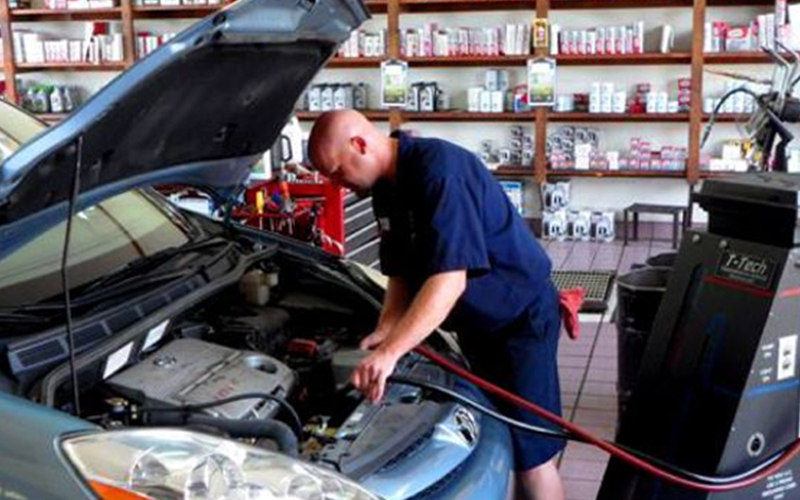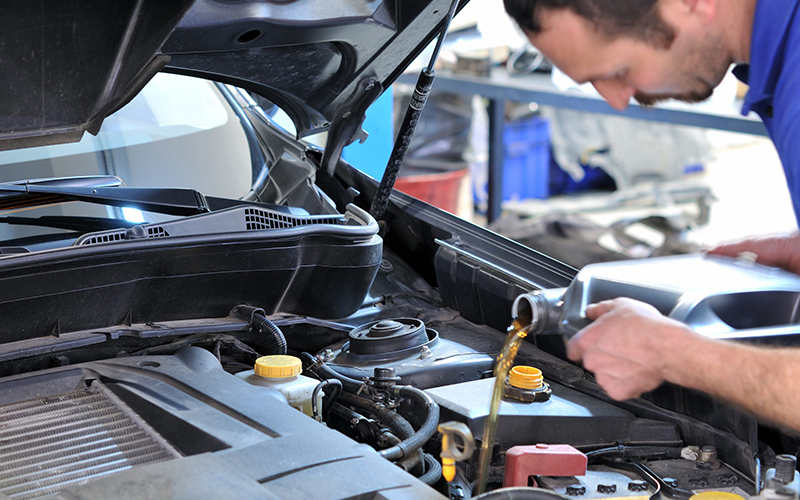

How Long Does An Oil Change Take? What Exactly Is Done And Its Price?
Car RepairClassic Cars December 18, 2018 0
It’s one of the most basic, most popular, and most crucial types of vehicular maintenance out there. No matter what you drive, so long as it has moving parts it will need clean oil to lubricate the engine.
Unfortunately, over time, oil can become sludgy. This can make it hard for the oil to lubricate the engine properly, causing added friction and strain. Preventing these issues is the goal of an oil change, and the reason why it can be so useful.
When you prevent strain on your engine, good things happen. Your max gas mileage and horsepower increase, and your engine is in less danger of experiencing component failure. Thus, it is always good to get your oil changed regularly.
Most of us even know the recommended time frame it is so commonly espoused. Every 3,000 miles, right? But there’s more to find out. How long does an oil change take? What exactly is done? And how much should you pay for it?
How Long Does an Oil Change Take?
If you’re auto-savvy, you probably know about the specifics of an oil change. Or maybe you’re just starting to learn about cars, and you’re trying to get a time frame for each aspect of regular maintenance. You could even be a person who knows very little about cars, but has a busy schedule and needs to know how long they can expect to have to wait at their local auto repair shop.
If you’re looking to get your oil changed, most garages with dedicated service bays and a pre-set work area can get you in and out quick. Some garages only need about 15-minutes to change your oil once your car is ready to be serviced.
Those who are changing their oil on their own can usually manage the task in 30-minutes to an hour, depending on the space and environment they have to work in.
Oil changes don’t take that long, but they can have a big impact on how well your vehicle operates. Skipping out on it for a few hundred or even thousands of miles can be tempting, especially if you haven’t budgeted in the time (however short it may be) or cash for it. However, there are benefits to getting it done on schedule.
Most people who put off getting an oil change are really concerned about giving up part of their day to make an appointment at the garage or get out under their own car.
It can be a tough task depending on your situation, but the alternative is leaving your car vulnerable to damage. When you don’t get an oil change, your gas mileage and horsepower can both suffer as well. These are problems no one wants to deal with, so the benefits to regular oil changes are there for anyone.
But what exactly goes on when you take your vehicle in for an oil change? What is being done, and if you wanted to do it yourself how hard would it be?
The Oil Change: What’s Happening? How Hard Is It to Do?
We’ve all heard about oil changes and we know they’re important – but what is exactly done? Sure, you’re getting new oil. But how is the process handled?
Let’s go over a step-by-step process to help newcomers understand exactly what mechanics are doing behind the walls of the auto shop. This can also shed some light on how hard the process seems, and can help people decide whether they want to try the task themselves.
To begin, if you’re changing the oil, you’d open the hood of your vehicle and prop it up. Then locate and remove the oil refill cap. There is some variation here, as different vehicles have different engine designs. But the easiest way to find the cap is to look for the symbol – it looks like a small gravy bowl.
The next step is to identify another important component of the process – the oil drain plug. This will be underneath your car rather than under the hood, so be prepared to get on your back. It helps if you have a lift, but a jack can also be used.
The best way to find out where your oil drain plug is located under the vehicle is to consult the manual. Once you find what you’re looking for, find the right sized wrench to unscrew it and have a pan on hand to catch the old oil. This is also a good chance to make sure the plug itself isn’t stripped, and isn’t going to fall off unexpectedly.
When you change the oil, it is also a good time to change the filter. This is another component whose location can vary depending on the vehicle. Once again, consult your owner’s manual for the precise look of your filter. But in most vehicles, it is usually either on top of or under the engine. In some vehicles, a special tool may also be needed to remove it.
When you remove the filter, it is important to make sure the oil ring, or the circular rubber ring around it, is removed too. Be careful – this will cause more oil to spill out, so have your pan ready. Then with the clean oil, lubricate the ring of the new filter before you screw it in. Use your fingers first, wrench second, to avoid putting too much torque.
Pour the new oil in, and use a funnel if you would like to ensure cleanliness. Sometimes a steady hand just isn’t enough. Finally, screw the cap back on and let the vehicle run for a few minutes afterwards to see if there are any leaks below.
This is a simple process, but how long does an oil change take if you do it on your own the first time? Plan to add an extra hour to your work at least, as you’ll be finding your way around the car and getting the feel for these steps.
Then there’s the question of cost – how expensive is an oil change, and does the price mean you’d be better off handling the task on your own?
How Much Does an Oil Change Cost? Is It Worth the Money?
We know that vehicles need oil changes – that isn’t up for debate. But the question is whether the cost of this process at your local garage justifies the price. If it doesn’t, you may be better off learning how to do it yourself if you’re someone who likes working with cars.
Luckily, not only is an oil change something that you may only need once every month or two at most, it’s also one of the most affordable types of regular maintenance on the market. You can expect to pay between $20-$55 for an oil change depending on where you go.
But should you fork over the $50 and set aside the half-hour or so it will take to book an appointment, wait at the garage, then get your oil changed? If you know how to do it yourself and have all the components you’ll need on hand, you may be better off to change it on your own.
This is different if your car’s design or your work environment make it hard for you to change the oil on your own. But in most cases, learning how to do this yourself can be a better move. You should consider learning it yourself if –
- You’re Already Somewhat Car Savvy: If you know your way around a vehicle to the point you have tools on hand and smart work habits engrained in your mind, you wouldn’t have much trouble changing oil.
- Your Local Mechanics Are Expensive: If you’re in an area where nearby mechanics want to charge too much money, you could save a lot of money overtime by doing this maintenance yourself.
- Your Vehicle Has Unique Needs: If your vehicle’s engine or design are unique, it could make maintenance more expensive. You may be better off learning how to service it yourself.
It’s also important to note that some warranties and maintenance/servicing packages also offer free or discounted rates for oil changes. If you have one of these options, it’s best to use it before it expires. Even if you don’t mind changing your own oil, having someone else do it can be the smarter option if it is free or heavily discounted.
Mastering the Oil Change for a Better Vehicle
How long does an oil change take? Especially if you’re doing it on your own? Once you’ve got it down and have a good space to work in, you can handle this task in about a half-hour not counting cleanup.
That’s not bad for one of the most important forms of vehicular maintenance out there. And when you master changing your oil, you can save money. But not just in the short-term. Clean oil and a clean filter can help your car perform better, essentially reducing the chance of engine failure over time.




No comments so far.
Be first to leave comment below.